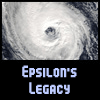| cieldumort |
| (Moderator) |
| Mon Sep 01 2008 12:20 AM |

|
|
|
The microwave passes provided above are poor choices to use when trying to ascertain whether or not internals are improving within a sub-hurricane tropical cyclone. Specifically, the PCT (Polarization Corrected Temperature) mode is best used to isolate deep convection, and not necessarily internal structure. Therefore, while it is at times quite good when looking at well-developed tropical storms and most hurricanes, it fails to help much if at all when things aren't already all "there."
You can read more about the benefits and drawbacks of PCT here.
Below is a portion of that tutorial
Quote:
The PCT image isolates convection within tropical cyclones and thereby allows an easy-to-understand introduction to the ability of the SSM/Ito detect precipitation. It is sensitive to snowflakes above the freezing level, and thus gives an effective view of conditions aloft in a storm. Although the PCT is a vertical integration, it can be thought of as showing precipitation at roughly 5 to 9 km, or15 to 30 thousand feet.
The Polarization Corrected Temperature (PCT) image combines the two polarizations of the 85 GHz channels. It enhances convection and virtually eliminates low-level clouds and ocean characteristics.
What is key in that explanation is that PCT "virtually eliminates low-level clouds." It might be great at picking up on afternoon thunderstorms, but that doesn't help much with Hanna.